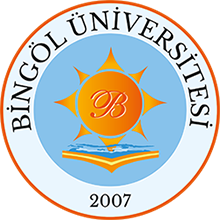ANALYSIS AND EVALUATION OF SOIL AND WATER GEOGRAPHY IN DISTRIBUTION OF HEALTH SERVICES IN RANIA DISTRICT BY USING GEOGRAPHIC INFORMATION SYSTEM
Özet
ABSTRACT
Rapid urbanization and the unplanned growth of the cities lead to the destruction of infrastructure facilities, loss of productivity in agricultural lands, pollution of surface and groundwater resources, extinction of open areas and climate change. Rapid increases in the city populations lead to unequal distribution of urban facilities. The unbalanced distribution of the services provided by the state among the different regions damages sense of social justice, leads to political instability and social crises. Social justice in a region can be achieved through equal spatial distribution and access of resources and services of the state among different regions. Rania district of northern Iraq undergone severe population increase rates in the last three decades thus raised problems of pollution, uneven distribution of urban facilities, loss of agricultural lands due to the sprawl of constructions. The present study aimed to determine the quantitative and qualitative spatial distributions of healthcare centers and facilities in Rania district. In this study, the impacts of various factors that are effective in the distribution of health services in Rania district have been determined and suitability of land uses for the locaton of medical care centers has been evaluated. Geographical information systems (GIS) have been used extensively to determine the location of health services and to interpret the relevant criteria. Health care is one of the basic requirements of life in a region and should be accessible to everyone. For this reason, urban planners need to give importance to accessibility when planning the distribution of health services in a region. Land suitability of health care centers is of great importance for the provision of urban amenities. Assessment of land use suitability significantly determines the urban and suburban plannings and decision-making process. Although the Rania district, which has a total of 5 sub-districts including the central district, is in good condition compared to local and national standards, it is still below the international standards. There is a significant disparity in the distribution of health services. This irregularity is due to the unplanned expansion of the city and the unpredicted speed of urbanization. The rapid increase in urbanization has already caused significant environmental problems. It is important to implement GIS-based plans so that these problems do not progress further. ÖZET
Hızlı kentleşme ve beraberinde şehirlerin planlanmamış büyümesi, altyapı tesislerinin tahrip edilmesine, tarım arazilerinin üretkenliklerinin kaybına, su kütlelerinin kirletilmesine, açık alanların yok olmasına ve iklim değişikliğine neden olmaktadır. Şehirlerin nüfusundaki hızlı artışlar, kentsel olanakların eşit olmayan dağılımına yol açmaktadır. Devletin sunduğu hizmetlerin bölgeler arasında dengesiz dağılımı, vatandaşların sosyal adalet duygusunun zarar görmesine, siyasal istikrarsızlığa ve sosyal krizlere yol açmaktadır. Bir bölgedeki sosyal adalet, farklı bölgeler arasında devletin kaynaklarının ve hizmetlerinin eşit mekansal dağılımı ve bunlara eşit erişim ile mümkün olabilir. Bu çalışmada, Irak’ın kuzeyinde Rania bölgesinde yer alan sağlık hizmetlerinin dağılımında etkili olan çeşitli faktörlerin etkileri belirlenmiş ve arazi kullanımı açısından değerlendirmeler yapılmıştır. Sağlık hizmetlerinin yerlerinin belirlenmesi ve ilgili kriterlerin yorumlanmasında coğrafi bilgi sistemleri (CBS) yoğun bir şekilde kullanılmıştır. Sağlık hizmetleri, bir bölgede yaşanyanların temel gereksinimlerden biridir ve herkes için erişilebilir olmalıdır. Bu nedenle, şehir plancıları sağlık hizmetlerinin dağılımını planlarken erişelebilirliğe oldukça önem vermeleri gerekir. Kentsel olanakların sağlanması için sağlık merkezlerinin arsa uygunluğu büyük öneme sahiptir. Arazi kullanım uygunluğunun değerlendirilmesi, kentsel ve banliyö planlamalarını ve karar alma sürecini önemli ölçüde belirlemektedir. Merkez ilçe dahil toplam 5 ilçesi olan Rania bölgesinde bir çok sağlık hizmeti lokal ve ulusal standartlara kıyasla iyi durumda olmasına rağmen, uluslrarası standardların altında olduğu anlaşılmaktadır. Sağlık hizmetlerinin dağılımında ise belirgin bir eşitsizliğin olduğu görülmektedir. Bu düzensizlik, şehrin plansız genişlemesi ve normalin çok üzerinde gerçekleşen şehirleşme hızından kaynaklanmaktadır. Şehirleşmenin hızlı artışı beraberinde çok önemli çevre sorunlarının ortaya çıkmasına neden olmaya başlamıştır. Bu sorunların daha da ilerlememesi için CBS tabanlı oluşturulan planlamaların uygulanması önemlidir.
Koleksiyonlar

DSpace@BİNGÖL by Bingöl University Institutional Repository is licensed under a Creative Commons Attribution-NonCommercial-NoDerivs 4.0 Unported License..













